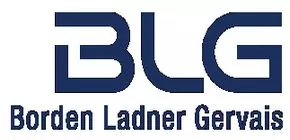- with Senior Company Executives, HR and Finance and Tax Executives
- in Canada
- with readers working within the Accounting & Consultancy, Banking & Credit and Insurance industries
The proposed changes would allow electricity distributors to earn a Margin on Payments (MoP) of up to 25 per cent of the payments made to DER providers.
The Ontario Energy Board (OEB) is proposing amendments to the Distribution System Code to accelerate the use of third-party distributed energy resources (DERs) as non-wires solutions (NWSs) in Ontario. The proposed changes would allow electricity distributors to earn a Margin on Payments (MoP) of up to 25 per cent of the payments made to DER providers, so long as the projects deliver a net benefit, and the present value of the margin does not exceed half the total projected benefit.
The proposal builds on recent OEB guidance on innovation and DERs as NWSs.1 By formalizing the MoP incentive and setting clear eligibility thresholds, the OEB aims to bring third-party solutions onto a more level footing with traditional infrastructure.2 The goal: to integrate more flexible, cost-effective resources into distribution planning.
The initiative is part of a broader effort to align utility incentives with system efficiency. The OEB has also floated four new Performance Incentive Mechanisms (PIMs), including one aimed at accelerating DER connection timelines.3 Together, these proposals reflect a regulatory system adapting itself to support a more dynamic, decentralized grid.
Stakeholders may comment on the proposed Distribution System Code amendments for the MoP using the OEB's online portal by June 9, 2025 (EB-2025-0083), and on the proposed PIMs following a presentation on June 3, 2025.4 Further details can be found on the OEB's website under "Advancing Performance-based Rate Regulation".
Details of the incentive proposal
To refine and operationalize the MoP model, the OEB engaged Guidehouse Canada Ltd. to assess incentive structures and to develop quantitative eligibility criteria.5 Guidehouse's 2025 report surveyed practices across seven jurisdictions and recommended a default margin of 25 per cent, along with a set of options for quantitative eligibility criteria intended to ensure customer value and affordability.6 The OEB accepted the default margin recommendation and is proposing modified eligibility criteria.7
In the proposed amendments, the OEB put forward two eligibility criteria:
- The third-party owned solution must have a positive forecast net benefit, as calculated using the quantitative impact categories identified in the Distribution System Test (DST) set out in the OEB's Benefit-Cost Analysis Framework for Addressing Electricity System Needs (BCA Framework); and,
- The net present value of the forecast MoP incentive amount cannot exceed 50 per cent of the net present value of the forecast net benefit of the proposed third-party DER solution.8
The OEB is proposing some flexibility on the second criteria. Distributors may apply for a MoP incentive that exceeds 50 per cent of forecasted net benefits where they can justify it based on qualitative benefits not captured by the DST's quantitative impact categories.9
Applicants will still be required to provide evidence of the prudence of the proposed NWS in accordance with the NWS Guidelines.10 Successful applications must maintain payment records and provide periodic reporting on distribution system benefits delivered during and after the incentive term.11
The proposed amendments signal the OEB's continued effort to support cost-effective alternatives to traditional infrastructure. If implemented, the MoP incentive could give distributors a stronger business case for pursuing third-party DER solutions that benefit both the system and ratepayers.
Footnotes
1. In 2021, OEB updated its Conservation and Demand Management (CDM) Guidelines for Electricity Distributors to require distributors to "make reasonable efforts" to consider CDM activities—such as demand response, energy storage (front or behind the meter), and behind-the-meter generation—in distribution system planning as substitutes for traditional infrastructure. In January 2023, the OEB's Framework for Energy Innovation (FEI): Setting a Path Forward for DER Integration report clarified expectations for the use of third-party distributed energy resources (DERs) as non-wires solutions (NWSs), identifying financial disincentives as barriers and proposing three incentive mechanisms: (1) a Shared Savings Mechanism, allocating net savings to distributors; (2) a Performance Target or Scorecard-Based Incentive, offering payments tied to DER-related performance metrics; and (3) a Margin on Payments (MoP), allowing distributors to earn a margin on payments made to DER providers. In March 2023, the OEB issued Filing Guidelines for Incentives for Electricity Distributors to Use Third-Party DERs as Non-Wires Alternatives, providing guidance for distributors seeking to apply for incentives. These were followed in March 2024 by the Non-Wires Solutions Guidelines for Electricity Distributors, which replaced the CDM Guidelines and state that distributors "are required" to assess whether rate-funded NWSs can cost-effectively meet system needs—especially for projects with capital costs above $2 million.
2. The Ontario Energy Board's (OEB) Innovation Sandbox has supported pilot projects that illustrate the practical application of third-party distributed energy resources (DERs) as non-wires solutions (NWSs). Alectra Utilities, in collaboration with the IESO and Natural Resources Canada, conducted a two-year pilot in York Region to test a local electricity market using customer-owned DERs. The project's first year secured three times the required capacity through a local capacity auction; during 2021 summer peaks, DERs provided 8 MW of demand reduction and 200 MWh of energy, with participants earning approximately $125,000 per MW. Hydro Ottawa, in partnership with BluWave-ai, managed electric vehicle chargers and battery storage using AI-driven demand response. In 2024, 13.7% of connected EVs participated in grid events, illustrating the potential of smart charging to defer infrastructure upgrades. Essex Powerlines launched its PowerShare pilot to establish a local flexibility market using the NODES platform, with trading activity beginning in late 2023 and continuing into 2025.
3. EB-2024-0129, Invitation to a Stakeholder Meeting, October 9, 2024. EB-2024-0129, OEB Staff Discussion Paper, Performance Incentive Mechanisms: Advancing Performance-Based Rate Regulation ("PIMs Discussion Paper"), May 2025. PIMs are defined as "revenue adjustment mechanisms that tie financial reward or penalties to the achievement of pre-defined targets" and may take the form of rewards, penalties, or symmetrical incentives. The proposed PIMs are: (1) System Capacity/Electrification (Load Factor) – reward-only, based on historical performance; (2) Reliability (SAIDI) – penalty-only, with individualized targets based on peer comparisons and the value of lost load; (3) Reliability (SAIFI) – penalty-only, with the same structure as SAIDI; and (4) Efficient Connections – average DER connection time, with reward-only or symmetrical structures, based on policy objectives.
4. EB-2024-0129, OEB Letter re Advancing Performance-based Rate Regulation – Performance Incentive Mechanisms (PIMs).
5. Guidehouse, Consultant Report on Options for Alternative Margin on Payments Incentive Mechanisms, April 16, 2025, p. 4-5.
6. The jurisdictions reviewed were Australia, California, Connecticut, Hawaii, Michigan, New York and Rhode Island. Guidehouse Canada Ltd., Consultant Report on Options for Alternative Margin on Payments Incentive Mechanisms, April 16, 2025, p. 4-5, 16-19.
7. EB-2025-0083, Notice of Proposal to Amend Code, p. 3-6.
8. Ibid., p. 4.
9. Ibid., p. 6.
11. Ibid.
The content of this article is intended to provide a general guide to the subject matter. Specialist advice should be sought about your specific circumstances.



